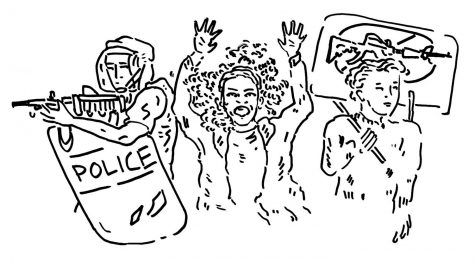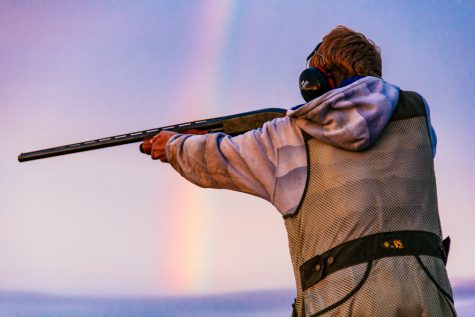The absurdity of active shooter drills becoming part of young students’ lives
September 23, 2021
Recently I caught the news of an ongoing lawsuit between a gunmaker company and the victims of the Sandy Hook Shooting, suddenly bringing back the memories of lockdown drills in elementary school that were instituted after the tragedy. I still remember my teacher closing the shades on windows and us students hiding in the corners of the room, quietly and anxiously waiting despite knowing that it was a drill.
Now as a college student, I question the regularity of such training. The drills develop a sense of normalcy around gun violence, forcing young students to accept the practice of preparing for active shootings at their schools. Lockdown drills, for me, now seem to be merely forcing potential victims to prepare for something that is definitely preventable by other efforts.
Attending public schools in the States, I became familiarized with lockdown drills to prepare for school shootings. Yet when I was in Japan, I noticed the difference in the emergency drills I went through in my school. Most of the time we were preparing for natural disasters like earthquakes. Obviously, we cannot prevent Earth’s rocky plates from crashing and cracking, so all we can do is to prepare for such unpredictable threats.
On the other hand, while school shootings are unpredictable like earthquakes, humans are the very cause of such threats. There is far more space for us to prevent them, or at least mitigate the damage, instead of leaving vulnerable subjects to anxiously prepare for such attacks. Sure, tracking criminal behaviors is difficult, but what kind of weaponry the attacker has access to is something we can control, and it is something that will profoundly influence the degree of damage the criminal can perpetuate.
Schools are supposed to be a space reserved for education. Normalizing active shooter drills leaves the vulnerable to respond to threats that are preventable by our social and political efforts. The continuing practice of active shooter drills, if uncontested with effective gun control regulations, will prevent children from understanding their schools as safe, protective institutions.
It is difficult for six- and seven-year-olds to realize the absurdity of learning how to protect themselves from a shooter, despite living in one of the most developed nations in the world. During the reinforced lockdown drills after the Sandy Hook tragedy, we were only powerlessly responding to instructions as young children.
Parents have to worry about their kids getting shot in their schools. Children are becoming frightened for their lives in classrooms. Teachers feel responsible to protect their students from a shooter. All of these create a level of normalcy that is highly disturbing and concerning, once viewed objectively.
The constant rehearsal of active shooter drills is a passive reaction to a preventable problem, which leaves the issue in the hands of its victims themselves. Lockdown drills must not become just another part of our lives.








Keith • Sep 24, 2021 at 6:53 am
Students engage in multiple drills, some of them monthly, in preparation for unpredictable and dangerous events. I’ve been a teacher for 28 years and have experienced more fire drills, tornado drills, and, yes, active shooter drills than I can count.
The alternative to these drills is to be completely unprepared for the unexpected. I don’t see such a condition as being superior to having a drill once a semester. Ten years ago this past August, we experienced an earthquake on the east coast that rattled our building. I was just about to release my class when it hit, and we had no idea what to do. The kids in that room looked terrified, and I was their only source of direction. In emergency situations, knowledge (and training) are power.
Now, the type of drill to which we expose small children matters. I wrote an article on this topic in late 2019: https://defconsecurityconsultants.com/2019/11/16/active-shooter-drills/
As for gun control, it’s a pipe dream. There are more than 200 million firearms in this country, 20-25 million of which are the long guns that gun-control advocates seem to fear so badly. There is no way on God’s green earth that all of those weapons will be removed from private hands. Even if the government manages to collect some of them, black markets and gun ‘chop-shops’ will ensure that the only people who have weapons are the sorts of people you REALLY don’t want having them.